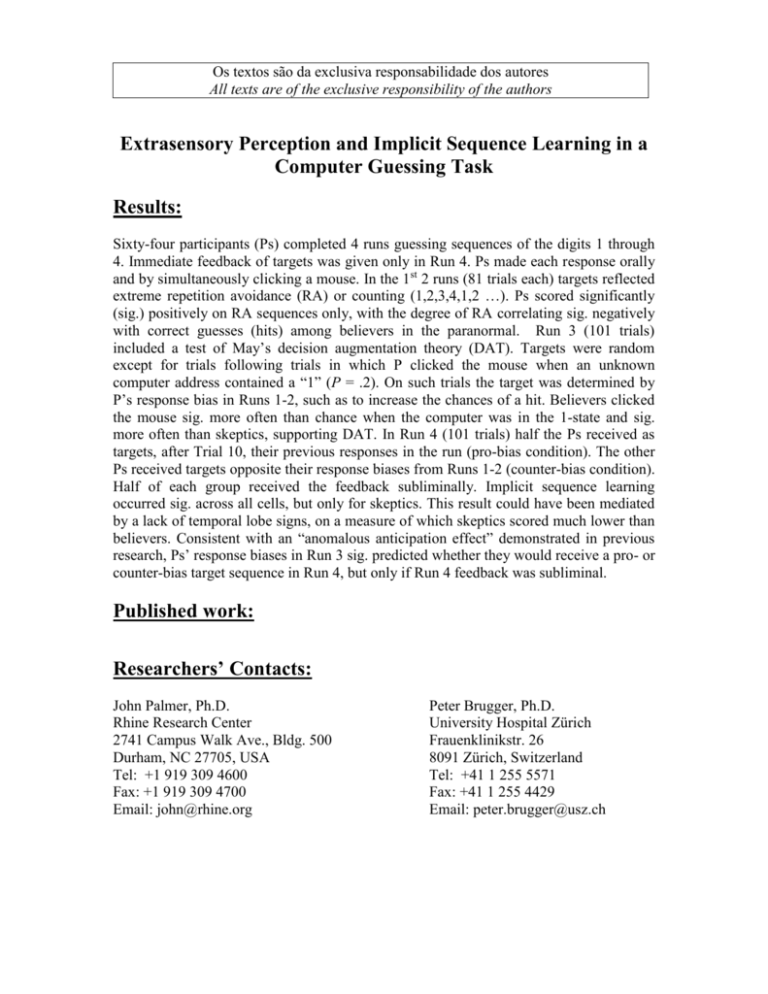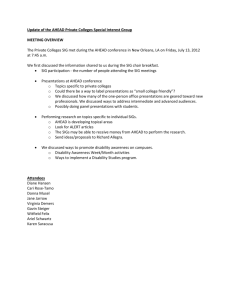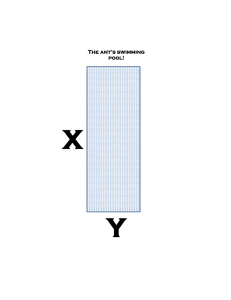Sixty-four participants (Ps) completed 4 runs, guessing sequences of
advertisement

Os textos são da exclusiva responsabilidade dos autores All texts are of the exclusive responsibility of the authors Extrasensory Perception and Implicit Sequence Learning in a Computer Guessing Task Results: Sixty-four participants (Ps) completed 4 runs guessing sequences of the digits 1 through 4. Immediate feedback of targets was given only in Run 4. Ps made each response orally and by simultaneously clicking a mouse. In the 1st 2 runs (81 trials each) targets reflected extreme repetition avoidance (RA) or counting (1,2,3,4,1,2 …). Ps scored significantly (sig.) positively on RA sequences only, with the degree of RA correlating sig. negatively with correct guesses (hits) among believers in the paranormal. Run 3 (101 trials) included a test of May’s decision augmentation theory (DAT). Targets were random except for trials following trials in which P clicked the mouse when an unknown computer address contained a “1” (P = .2). On such trials the target was determined by P’s response bias in Runs 1-2, such as to increase the chances of a hit. Believers clicked the mouse sig. more often than chance when the computer was in the 1-state and sig. more often than skeptics, supporting DAT. In Run 4 (101 trials) half the Ps received as targets, after Trial 10, their previous responses in the run (pro-bias condition). The other Ps received targets opposite their response biases from Runs 1-2 (counter-bias condition). Half of each group received the feedback subliminally. Implicit sequence learning occurred sig. across all cells, but only for skeptics. This result could have been mediated by a lack of temporal lobe signs, on a measure of which skeptics scored much lower than believers. Consistent with an “anomalous anticipation effect” demonstrated in previous research, Ps’ response biases in Run 3 sig. predicted whether they would receive a pro- or counter-bias target sequence in Run 4, but only if Run 4 feedback was subliminal. Published work: Researchers’ Contacts: John Palmer, Ph.D. Rhine Research Center 2741 Campus Walk Ave., Bldg. 500 Durham, NC 27705, USA Tel: +1 919 309 4600 Fax: +1 919 309 4700 Email: john@rhine.org Peter Brugger, Ph.D. University Hospital Zürich Frauenklinikstr. 26 8091 Zürich, Switzerland Tel: +41 1 255 5571 Fax: +41 1 255 4429 Email: peter.brugger@usz.ch






